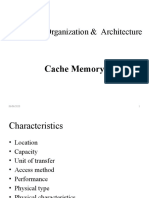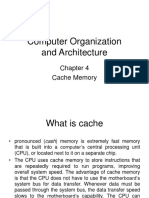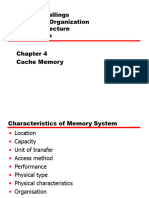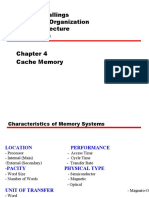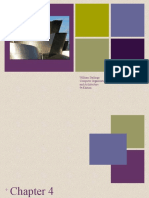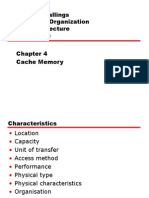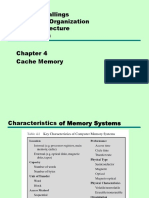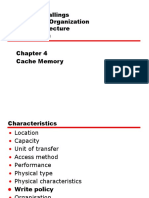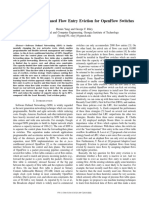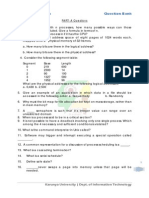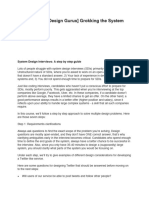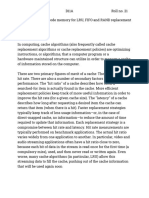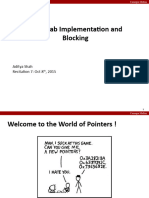0% found this document useful (0 votes)
171 views47 pagesCache Memory: William Stallings, Computer Organization and Architecture, 9 Edition
The document discusses computer memory systems and cache memory. It describes how memory is structured in a hierarchy with cache being the fastest memory located between the CPU and main memory. The objectives are to present an overview of computer memory characteristics and the memory hierarchy, describe the basic concepts and design of cache memory, and explain the performance implications of multiple memory levels.
Uploaded by
Phúc TừCopyright
© © All Rights Reserved
We take content rights seriously. If you suspect this is your content, claim it here.
Available Formats
Download as PDF, TXT or read online on Scribd
0% found this document useful (0 votes)
171 views47 pagesCache Memory: William Stallings, Computer Organization and Architecture, 9 Edition
The document discusses computer memory systems and cache memory. It describes how memory is structured in a hierarchy with cache being the fastest memory located between the CPU and main memory. The objectives are to present an overview of computer memory characteristics and the memory hierarchy, describe the basic concepts and design of cache memory, and explain the performance implications of multiple memory levels.
Uploaded by
Phúc TừCopyright
© © All Rights Reserved
We take content rights seriously. If you suspect this is your content, claim it here.
Available Formats
Download as PDF, TXT or read online on Scribd
/ 47




